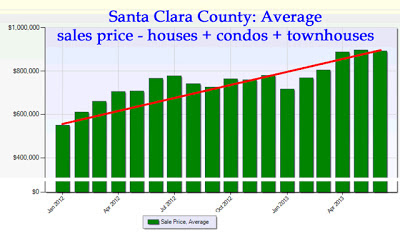Student-Loan Debt Keeps Buyers Out of
the Market
As we hear that Congress struggles with the "student loans" question, it is good to put it in perspective with a few facts. I thought the article below was kind of important to keep in mind.
The impact of student-loan debt on the nation's housing market has real estate analysts worried due to the importance of first-time buyers to the health of the market. Questions linger about whether the housing recovery will be limited as deeply indebted college graduates struggle to stabilize their finances, which means young, first-time purchasers are not entering into homeownership at traditional rates.
As we hear that Congress struggles with the "student loans" question, it is good to put it in perspective with a few facts. I thought the article below was kind of important to keep in mind.
The impact of student-loan debt on the nation's housing market has real estate analysts worried due to the importance of first-time buyers to the health of the market. Questions linger about whether the housing recovery will be limited as deeply indebted college graduates struggle to stabilize their finances, which means young, first-time purchasers are not entering into homeownership at traditional rates.
- According to the NATIONAL ASSOCIATION OF REALTORS®, first-time buyers comprised just 28 percent of purchases in the resale market during May. For comparison, typically these buyers make up 40 percent of purchases. The lower rate is not surprising when one considers the statistic that college graduates on average carry $21,402 in student loan debt, and troublingly, only 39 percent are in a capacity to repay. Clearly, many college graduates have no choice but to postpone the purchase of a home due to heavy debts from student loans.
- The homeownership rate for those individuals who are still paying off student loans is 36 percent lower than among their peers who have no student debt, according to research from the One Wisconsin Institute.
- Student-loan debt will remain a long-term issue because the average payoff time is 21 years, ranging from 17 years for those who attended college but did not get a degree to 23 years for those with graduate degrees.
- The country’s total outstanding student debt has surpassed $1.1 trillion. For recent graduates, the debt load averages just under $27,000, but an estimated 13 percent of outstanding balances range from $54,000 to $100,000.
Do you have any thoughts on the subject? Feel free to chime in!
Francis
Silicon Valley real estate
Local market: Smart graphs
Current mortgage rates

























 Click to see larger Pix
Click to see larger Pix larger pix
larger pix









